Do Turtles Like To Be Held?
Whether you own a turtle or suddenly come across one, feeling or taking it in your hand can be intriguing. But what about the turtles; do they prefer to be in hand like dogs and other animals? So, you may wonder, do turtles like to be held?
The answer is not as simple as a yes or no. Each turtle is different and has its own personality. Some turtles enjoy being held and will even climb onto their owner’s hand. Other turtles do not like to be held and will try to squirm away. So, the best way to tell whether your turtle likes to be held is to try it and see how the turtle reacts.
To understand the behavior, if your turtle is constantly trying to get away from you when you try to hold it, then it is probably not a fan of being held. On the other hand, if it seems content in your arms and even falls asleep, then it enjoys your company and being held. Well, let’s discuss more on this topic below.
Related Blog:
Is it Ok to Hold a Turtle?
Many opinions are out there about whether or not it is okay to hold a turtle. Some people say that turtles are delicate creatures and should only be handled with care, while others believe that it is perfectly fine to hold a turtle. So, what is the right answer?
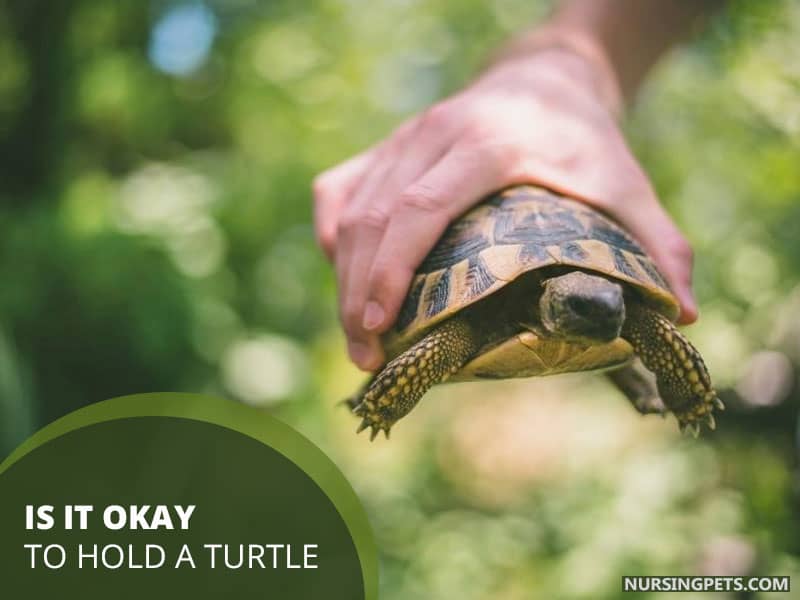
The truth is, it depends on the turtle. Some turtles are perfectly ok with being held, while others do not like it at all. If you are unsure whether your turtle is okay with being held, it is always best to err on the side of caution and not do it.
Which Turtles Like to Be Held in Hand Or Picked Up?
There are many different species of turtles, and each has its own preferences. So, you can’t tell for sure. However, in general, most turtles do not like to be held in hand or picked up and may even become aggressive if they feel threatened in this way.
But, one of the most common turtles that people like to hold is the box turtle. Box turtles are relatively small, and their shell is fairly soft, making them easy to carry. They are also one of the longest-living turtles, with some individuals living over 100 years.
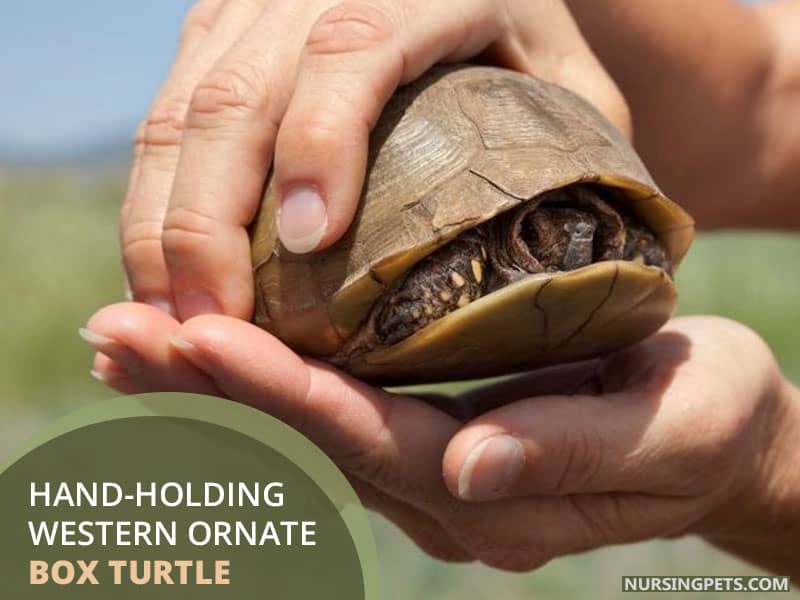
Box turtles are very easy to handle, and they love to be around people. If you are looking for a turtle that you can hold and pick up, the box turtle is a great choice.
Another popular pet turtle that enjoys being held is the red-eared slider. Red-eared sliders are a bit larger than box turtles, but they can still be easily carried.
They tend to be active and playful and often enjoy being held by their owners.
Other than those, soft-shell turtles are also tolerant of handling. However, snapping turtles aren’t a good choice for holding or picking up due to their size and temperament.
How Should You Hold a Turtle?
You know that turtles can be quite delicate creatures. Some of them have thin shells that can easily be cracked or broken, and their legs are also quite fragile. So, if you’re thinking about picking/holding one up, it’s important to handle them with care. Here are a few tips on how to hold a turtle:
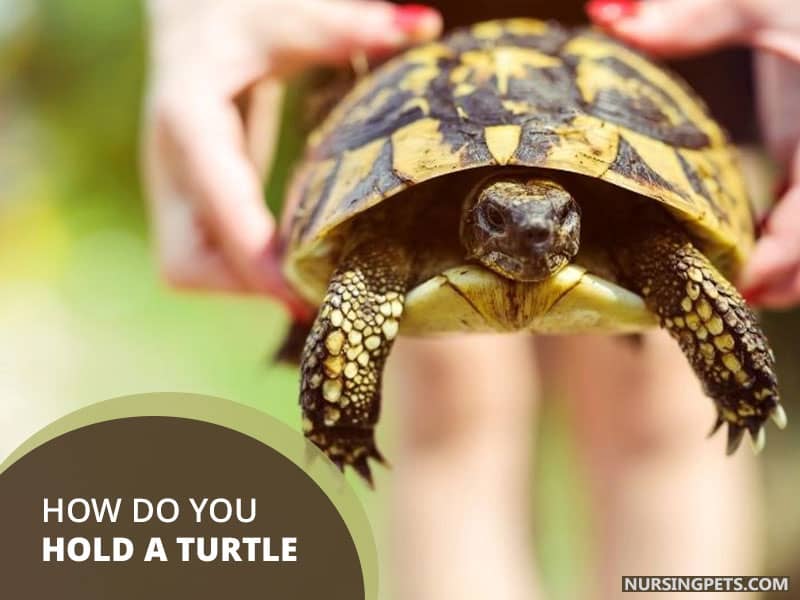
Step One: First things first, make sure that the turtle is clean. This means that you should wash your hands before handling the turtle and avoid handling it if you have any cuts or open wounds.
Step Two: When you pick up the turtle, make sure to support its shell with your hand. You can do this by cupping your hand underneath the shell, or by placing your hand on top of the shell.
Step Three: Once you have a good grip on the shell, slowly lift the turtle up. Avoid jerking or sudden movements, as this could injure or frighten the turtle.
Step Four: When you’re holding the turtle, make sure that they’re level. This means that their head should be level with their body, and their legs should be free to move. If you’re holding them too tightly, they won’t be able to move their legs and could end up injuring themselves.
Step Five: Finally, when you’re done handling the turtle, make sure to put them back down safely. Avoid dropping them, as this could also injure them.
Step Six: In case you need to transport the turtle, place it in a box or container that’s big enough for it to move around in. Make sure to put a lid on the container, so the turtle doesn’t escape.

Step Seven: Also, the holding method will vary according to the size of your turtle.
For a small turtle, you can cup your hands around the shell and support the turtle’s body with your fingers. You can also hold the turtle by the edges of the shell, but be careful not to squeeze too hard.
Having a medium-sized turtle, you can hold it by the sides of the shell or by the back legs. Again, be careful not to squeeze too hard.
But, if it is a large turtle, you can hold it by the back legs or by the shell. You can also support the turtle’s body with your other hand.
However, remember that turtles can carry bacteria on their shells, so washing your hands thoroughly after handling them is important.
Do Turtles Like being Handled?
The answer, unfortunately, is not a simple one. While some turtles seem to enjoy being handled and will even come to their owner for attention, others may become stressed or even scared when handled.

The best way to determine if your turtle enjoys being handled is to simply watch its behavior. In case it seems content and even curious when you approach it, then it is likely that it enjoys this.
However, it is probably best to leave it alone when it immediately hides away or tries to escape when you try to pick it up.
Additionally, there are a few things you need to consider before trying to hold one:
First, it is important to keep in mind that turtles are wild animals. This means that they are not used to being handled by humans and may not enjoy the experience. If you are going to handle your turtle, it is important to do so gently and with care.

Second, each turtle is different and will therefore have different preferences. Some turtles may enjoy being handled while others may not. Therefore, it is important to get to know your turtle and see how it reacts to being handled.
Third, turtles can be easily stressed. This means that if you are handling your turtle too much or in a way that is too rough, it could become stressed out. When turtles are stressed, they may stop eating, become lethargic, and their shells may even change color.
Can You Hold a Turtle Too Much?
You might be surprised to learn that you can actually hold a turtle too much. While turtles are generally quite resilient creatures, they can become stressed out if they are handled too frequently or for too long.
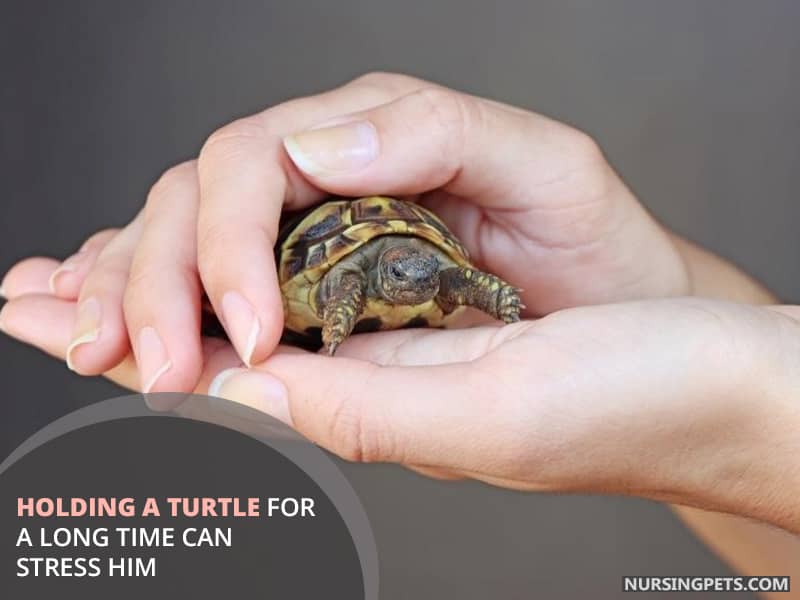
But as a general rule, you should only handle your turtle when necessary, such as when you’re cleaning their tank or giving them food.
What Happens If You Hold a Turtle?
When you hold a turtle, it will likely try to climb out of your hand. Turtles are natural climbers and will use their claws and beak to grip onto anything they can to try to escape. If you don’t want your turtle to escape, make sure to keep a firm grip on it.
However, some turtles could bite simply because they’re scared or uncomfortable. So, make sure to handle them with care.
And there’s no problem with holding a turtle, as long as you’re careful. Make sure to support its bottom, so it doesn’t fall and hurt itself, and don’t hold it too tight or too high off the ground.
Why Shouldn’t You Hold a Turtle?
Turtles may look cute and harmless, but they can actually be quite dangerous. Some can bite or scratch you if they feel threatened or uncomfortable. So, if you want to hold one, here are five reasons why you shouldn’t:
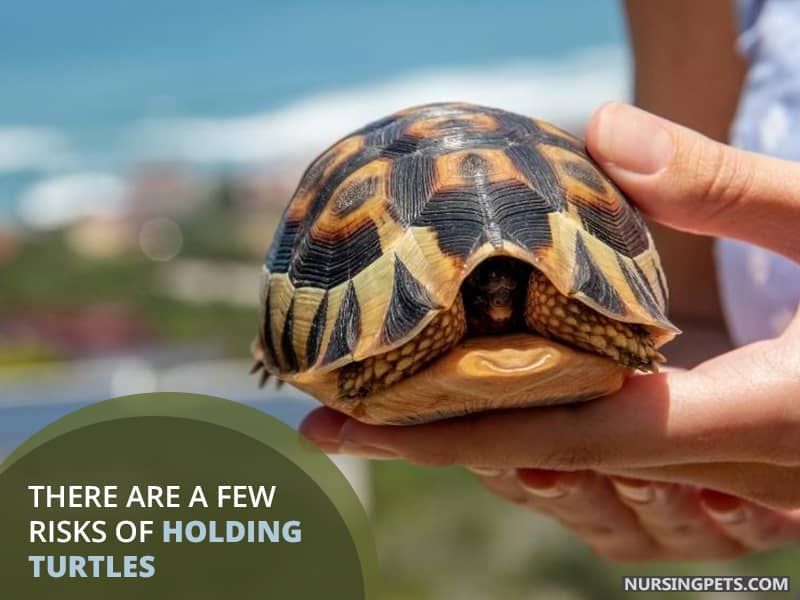
01. Turtle Can Carry Salmonella.
Turtles are often carriers of salmonella, which is a type of bacteria that can cause food poisoning. Symptoms of salmonella include diarrhea, vomiting, and fever. In severe cases, it can even lead to other serious health problems.
02. They Can Bite.
Turtles have sharp beaks that they use to bite their prey. And although they might not be able to take your finger off, they can certainly break the skin and could cause infection.
03. Can Scratch.
These creatures have sharp claws that they use for climbing and digging. When turtles get scared, they may try to scratch you with their claws, which can also cause an injury or infection.
04. Carry Diseases.
Turtles can carry a number of different diseases, including chlamydia, herpes, and salmonella. These diseases can be passed on to humans, so avoiding contact with a random turtle is best.

05. Wild Animals.
Turtles are wild animals, and as such, they can be quite unpredictable. They may seem docile when you’re holding them, but they can suddenly become aggressive and try to bite or scratch you.
So What to Do If You Really Need to Hold The Turtle?
If you absolutely must hold a turtle, do so carefully and briefly. Avoid holding a turtle by its tail—this can injure its spine. Instead, support the turtle’s body from underneath.
For larger turtles, place one hand on each side of the carapace (upper shell). For smaller turtles, you can cup your hands around the turtle’s body. Also, keep these things in mind:

Turtles can carry different diseases. So, wash your hands thoroughly with soap and water after handling a turtle or its habitat, such as water from a turtle bowl.
Don’t allow children younger than 5 years old, people 65 years and older, or people with weakened immune systems to handle or touch the turtle or anything in its habitat.
Clean your turtle’s habitat regularly. This will more likely reduce the possibility of any danger. And don’t kiss a turtle or put it in your mouth.
Is It True That You Shouldn’t Move a Turtle?
This is a common myth that many people believe, but it is actually not true! You can safely move a turtle as long as you do it properly.
First, you must find a suitable container to transport the turtle. The container should be large enough for the turtle to move around but not so large that the turtle can easily escape. You can use a plastic storage container, a cardboard box, or even a laundry basket.

Next, you need to place something in the bottom of the container for the turtle to grip onto. This can be a piece of carpet, a towel, or a piece of cardboard. This will help to keep the turtle from sliding around inside the container.
Finally, you need to put the lid on the container and secure it so the turtle cannot escape. You can use duct tape, packing tape, or even zip ties.
Once the container is secure, you can safely transport the turtle to its new home. Just make sure to keep an eye on the turtle during transport, and do not allow it to escape!
Frequently Asked Questions
Do tortoises like to be held?
Just like turtles, we don’t really know if tortoises like to be held because they can’t tell us. But we do know that they don’t like being handled roughly. We also know that most tortoises like to be left alone.
However, some may act differently and enjoy holding by humans, and like to spend time with humans. To find out, follow our above guidelines and check their behavior when trying to hold them.
Do turtles like to be touched/petted?
Some turtle owners say their turtles seem to enjoy being touched and petted, while others report that their turtles prefer not to be touched. Ultimately, it may come down to the individual turtle’s personality.
Some turtles may enjoy being touched and petted, while others may not. If you’re unsure whether your turtle enjoys being touched, it’s best to err on the side of caution and avoid touching or petting your turtle.
Why should you not pick up a turtle crossing the road?
Turtles are often struck by vehicles while crossing roads. Picking up a turtle and moving it off the road may seem like the right thing to do, but it can actually be harmful to the turtle.
When a turtle is picked up and moved, it can become disoriented and have trouble finding its way back to its home range. This can put the turtle at risk of being eaten by predators or hit by another vehicle.
Turtles are also protected by law in many states and countries. In the United States, for example, it is illegal to collect or harass turtles in many states. So, if you come across a turtle crossing the road, it’s best to leave it alone and let it go about its business.
Why should You not pick up a random turtle?
There are many reasons why you should not pick up a random turtle. The first reason is that you could be putting yourself in danger. Turtles can carry bacteria and diseases that can be harmful to humans.
Also, turtles are wild animals and should be respected as such. Picking up a turtle can be stressful for the animal and can cause it to become injured or even die. And finally, turtles are protected by law in many areas, and it is illegal to remove them from the wild without a permit.
In the United States, the Endangered Species Act protects turtles from being collected from the wild. This law makes it illegal to remove turtles from their natural habitat. Violators of the Endangered Species Act can be fined up to $100,000.
Final Takeaways:
It’s generally accepted that turtles don’t like to be held, and there’s a science to back it up. A study published in Applied Animal Behavior Science found that turtles who were held by humans showed increased levels of the stress hormone cortisol.
But it is not the same for all turtles. Especially, the box and red-eared slider turtle species seem to enjoy the human touch. However, it could vary from turtle to turtle. To find out about yours, observe the behavioral changes. That should give you the answer.
And that’s all for today. If you have any questions or insights regarding this matter, feel free to let us know in the comment section.
Image Source: Canva.com/photos

